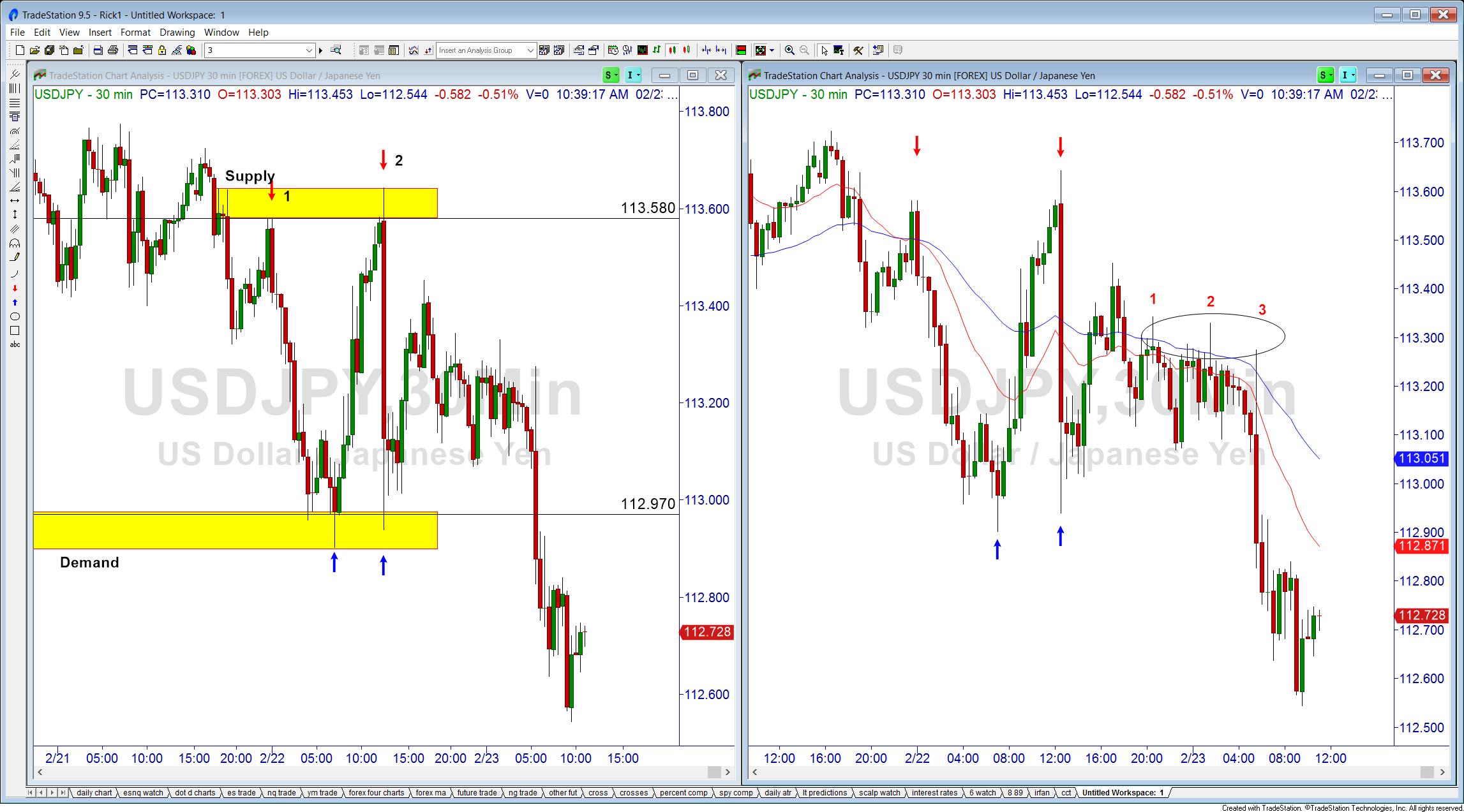Hello traders! This week’s newsletter comes to you from snowy and sunny Colorado, where I have officially semi-retired. What does semi-retirement really mean? Well, I still get to write these newsletters every few weeks, and Online Trading Academy is still kind enough to get me around the country to cool towns to spread the gospel according to St. Market. If all I did was stay at home and trade in this snowy tundra, I would go stir crazy!
The reason I bring this up is that a couple of weeks ago I was in Boston, Massachusetts teaching one of our three-day Market Timing Orientation classes, and a student had an interesting question about conventional technical analysis.
His question was a common one: “What do you think about moving averages?” My answer was the same as it always is when someone asks about conventional technical analysis. “It depends. Does it help you or hurt you making money in the markets? Every ‘technique’ has its time and place, but most people don’t know how to use these tools properly.”
As we have discussed in previous newsletters, most of these indicators lag the market, which basically means they are late to the party. A couple of extremely basic rules of using moving averages, as found in all of the trading books ever written, is to go long when the moving averages are pointing up, when price hits the moving average; also, the trader should go short when the moving averages are pointing down, when price hits the moving average.
Fair enough, but let’s look at a chart to see how this would work in the real world. In the following USDJPY 30-minute chart on the left, I’ve marked an obvious supply zone and an obvious demand zone. (As a reminder, our core strategy states to sell in quality supply and buy in quality demand.) The chart on the left shows only a couple of the supply and demand levels for clarity sake. The chart on the right shows two common moving averages that some traders use, the 20 exponential and 50 exponential. For an in-depth explanation on these moving average see this article by Rick Wright.
The OTA student using our core strategy could have used the indicated supply to go short twice, once at the red arrow marked 1, a second time at the red arrow marked 2. (The original demand level is even farther back in time, but again, for clarity sake.) This same student could also have gone long at the demand level where the blue arrows are marked.
Notice where the red arrows are marked on the chart on the right. I haven’t seen a trading book yet that tells you to go short above a moving average like this! Now take a look at the blue arrows on the right-hand chart. How many trading books have you read that say to go long against the down-sloping moving averages? I would say none.
Let’s take this one step further. Using the rule mentioned earlier, some trading books suggest shorting when price moves up to the moving average. However, this only counts for the ENTRY. We also must be aware of our stop loss and profit target. Many trading book strategies tell you to place your stop loss just above the moving average that was used to enter the trade. Can you see a problem with this when looking at the red numbers 1, 2, and 3? Using that strategy, you would have been stopped out three times in a row! Not a great trading day…
So, the main take-away from this week’s newsletter should be this: all techniques have their time and place. But when and where are they? If you aren’t making money using them, they should obviously not be on your charts. Using supply and demand is the fastest way to get into and out of the market, when used with our entire core strategy.
This content is intended to provide educational information only. This information should not be construed as individual or customized legal, tax, financial or investment services. As each individual's situation is unique, a qualified professional should be consulted before making legal, tax, financial and investment decisions. The educational information provided in this article does not comprise any course or a part of any course that may be used as an educational credit for any certification purpose and will not prepare any User to be accredited for any licenses in any industry and will not prepare any User to get a job. Reproduced by permission from OTAcademy.com click here for Terms of Use: https://www.otacademy.com/about/terms
Editors’ Picks

EUR/USD recovers toward 1.0500 after mixed US PMI data
EUR/USD rebounds toward 1.0500 in the American session on Friday after the data from the US showed that the business activity in the private sector expanded at a softer pace than anticipated in early February. The pair remains on track to end the week with little changed.

GBP/USD rises above 1.2650, looks to post weekly gains
GBP/USD regains its traction and trades above 1.2650 in the second half of the day on Friday. The data from the US showed that the S&P Global Services PMI dropped into the contraction territory below 50 in February, causing the US Dollar to lose strength and helping the pair edge higher.

Gold holds above $2,930 as US yields edge lower
Gold holds above $2,930 after correcting from the record-high it set above $2,950 on Thursday. Following the mixed PMI data from the US, the benchmark 10-year US Treasury bond yield stays in negative territory below 4.5% and allows XAU/USD to hold its ground.

Crypto exchange Bybit hacked for $1.4 billion worth of ETH
Following a security breach first spotted by crypto investigator ZachXBT, crypto exchange Bybit announced that it suffered a hack where an attacker compromised one of its ETH wallets.

Money market outlook 2025: Trends and dynamics in the Eurozone, US, and UK
We delve into the world of money market funds. Distinct dynamics are at play in the US, eurozone, and UK. In the US, repo rates are more attractive, and bills are expected to appreciate. It's also worth noting that the Fed might cut rates more than anticipated, similar to the UK. In the eurozone, unsecured rates remain elevated.
RECOMMENDED LESSONS
Making money in forex is easy if you know how the bankers trade!
Discover how to make money in forex is easy if you know how the bankers trade!
5 Forex News Events You Need To Know
In the fast moving world of currency markets, it is extremely important for new traders to know the list of important forex news...
Top 10 Chart Patterns Every Trader Should Know
Chart patterns are one of the most effective trading tools for a trader. They are pure price-action, and form on the basis of underlying buying and...
7 Ways to Avoid Forex Scams
The forex industry is recently seeing more and more scams. Here are 7 ways to avoid losing your money in such scams: Forex scams are becoming frequent. Michael Greenberg reports on luxurious expenses, including a submarine bought from the money taken from forex traders. Here’s another report of a forex fraud. So, how can we avoid falling in such forex scams?
What Are the 10 Fatal Mistakes Traders Make
Trading is exciting. Trading is hard. Trading is extremely hard. Some say that it takes more than 10,000 hours to master. Others believe that trading is the way to quick riches. They might be both wrong. What is important to know that no matter how experienced you are, mistakes will be part of the trading process.

The Best brokers to trade EUR/USD
SPONSORED Discover the top brokers for trading EUR/USD in 2025. Our list features brokers with competitive spreads, fast execution, and powerful platforms. Whether you're a beginner or an expert, find the right partner to navigate the dynamic Forex market.

